Recent Articles
Popular Makes
Body Types
2021 Lincoln Corsair Road Test and Review
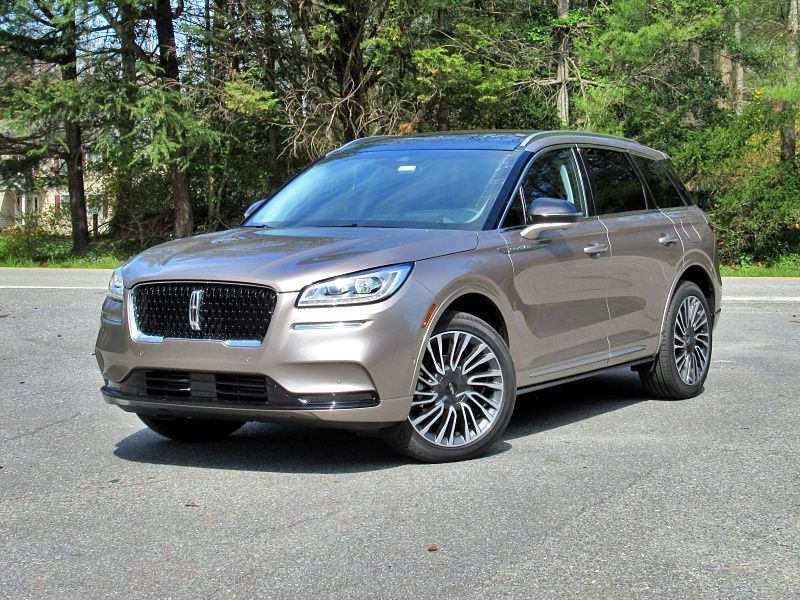
2021 Lincoln Corsair Reserve ・ Photo by Brady Holt
Lincoln is best known for huge sedans like the Continental and Town Car, which used their size to indicate luxury: Big car means big money. More recently, the brand successfully transferred that theme to its flagship Lincoln Navigator full-size SUV.
But the best-selling Lincoln takes a different approach. That’s the 2021 Lincoln Corsair, a compact luxury crossover. It’s priced from $36,105 and measures just 180.6 inches nose to tail — 3.5 feet less than a Town Car, and even shorter than a Toyota RAV4. Relatively affordable, economical, and easy to drive, it applies Lincoln’s comfort and gentility to a hotter market segment. We just spent a week in the Corsair to see how it fits into a hotly contested market segment; read on to find out if it’s the right small luxury SUV for you.
Elegant Design
Like its predecessor, the Lincoln MKC, the Corsair is a luxury version of the Ford Escape. Both models have managed to avoid any visual similarity to their mainstream-brand sibling.
Introduced for 2020, the Corsair looks contemporary and distinctive without being busy or aggressive. It’s a gentle, genteel design whose upright front end and high-mounted headlights are quietly assertive. Its gracefully tapering windowline, forward-leaning rear windshield, and blacked-out roof pillars make the Corsair look less boxy, and the slim taillight bar pays homage to past Lincoln designs. Our test vehicle’s Iced Mocha paint job complements the design nicely. Overall, the Corsair looks appropriately upscale without needing to be visually imposing.
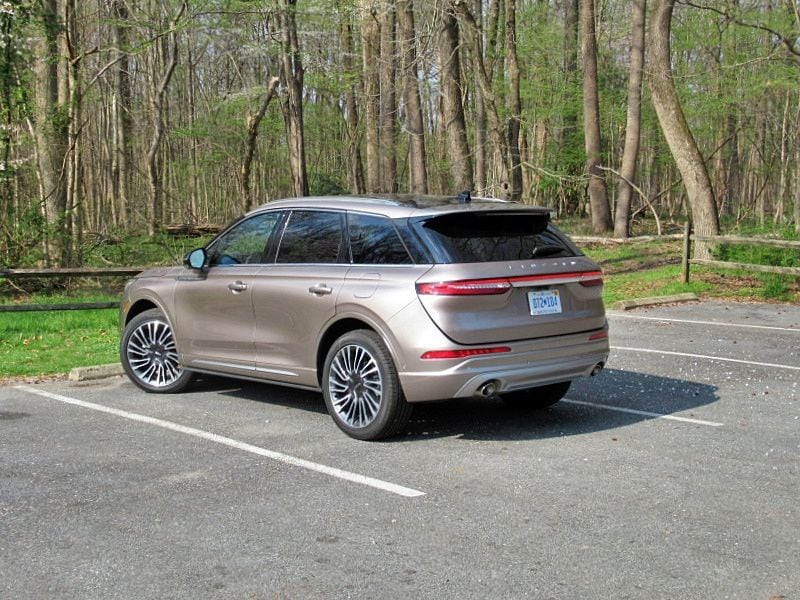
Photo by Brady Holt
Contemporary Interior
The Corsair’s interior design is similar to other recent Lincoln SUVs. The dashboard’s straight lines and solid, blocky elements recall the more board-like dashboards of decades past. But it’s also wholly contemporary, with an 8-inch infotainment touchscreen perching near the middle of the dash and a well-organized panel of physical buttons below it. Unlike too many luxury cars, Lincoln kept the controls simple and straightforward. Most materials are luxury-grade, but we found some disappointingly basic plastics on the interior door panels and the rear of the center console.
An 8-inch touchscreen isn’t especially big these days, but the Corsair’s system works well and supports Android Auto and Apple CarPlay smartphone integration. We think Lincoln could retrofit a larger screen without needing to redesign much of the dashboard, so expect the Lincoln Nautilus’s 13.2-inch touchscreen (or at least the Navigator’s 10-inch unit) to appear within the next year or two. Drivers also get a customizable digital gauge cluster, and high-end Corsair models enjoy smartphone-as-a-key technology: Downloading an app allows designated phones to unlock and start the vehicle.
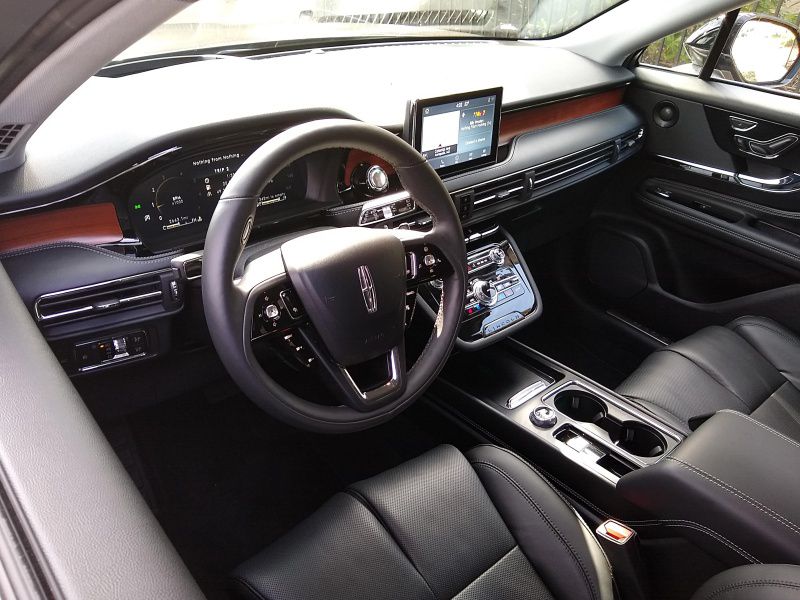
Photo by Brady Holt
Plenty of Space
Some luxury vehicles are unexpectedly cramped inside, sacrificing room to style demands and mechanical needs (such as rear-wheel-drive-based architecture). The Corsair does give up a few cubic feet compared with the Ford Escape, but it’s roomier than many similarly sized luxury suvs.
The Corsair can fit four adults comfortably and squeeze in a fifth, as long as the fore-aft-adjustable rear seat is all the way back. The front seats have optional 24-way “Perfect Position” adjustability, a great perk if you have the patience to experiment. Some drivers would prefer something wider, though, and no seat adjustment can change the Corsair’s dimensions. For cargo, the Corsair has 28 cubic feet of space behind its rear seat and 58 cubic feet with the rear seat folded. The vehicle is also rated to tow a respectable 3,000 pounds.
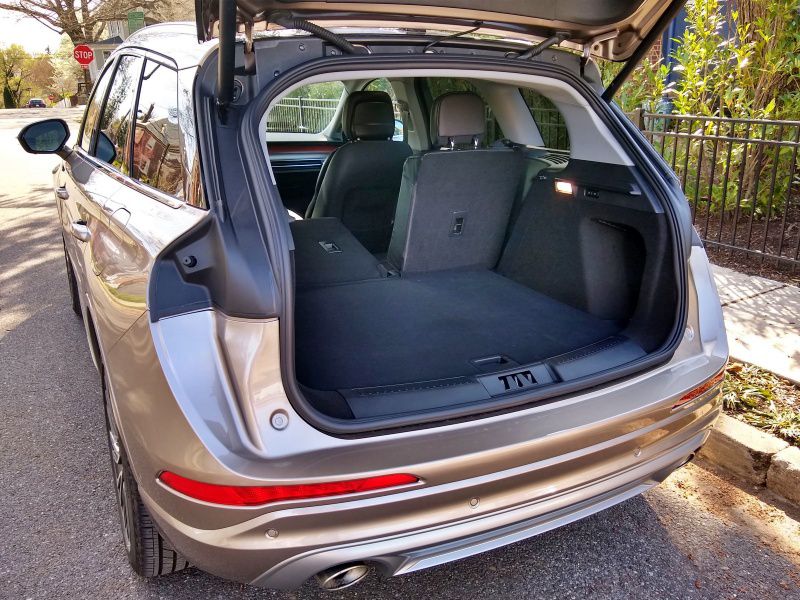
Photo by Brady Holt
Easygoing, Which Doesn't Mean Dull
Many luxury suvs have unexpectedly stiff rides. Their suspensions have been engineered by teams that are used to building sports sedans, and they’re often burdened further with oversized wheels. If you opt for our test vehicle’s huge 20-inch wheels, you’ll indeed feel the bumps, but overall this was a car successfully engineered to be easygoing. It’s generally smooth, quiet, and effortless.
If that’s making you think of a dull couch on wheels, though, think again. The Corsair borrows its bones from the moderately sporty Ford Escape, and the same agility survives the vehicle’s transformation into a Lincoln. Driving enthusiasts will still probably prefer a BMW X3 or Alfa Romeo Stelvio, but the Corsair feels connected to the road and can corner with composure. It’s not an engineering marvel, even with its optional adaptive suspension, but it feels neither too soft nor downscale. A tight turning circle and well-weighted steering also make it easy to drive.
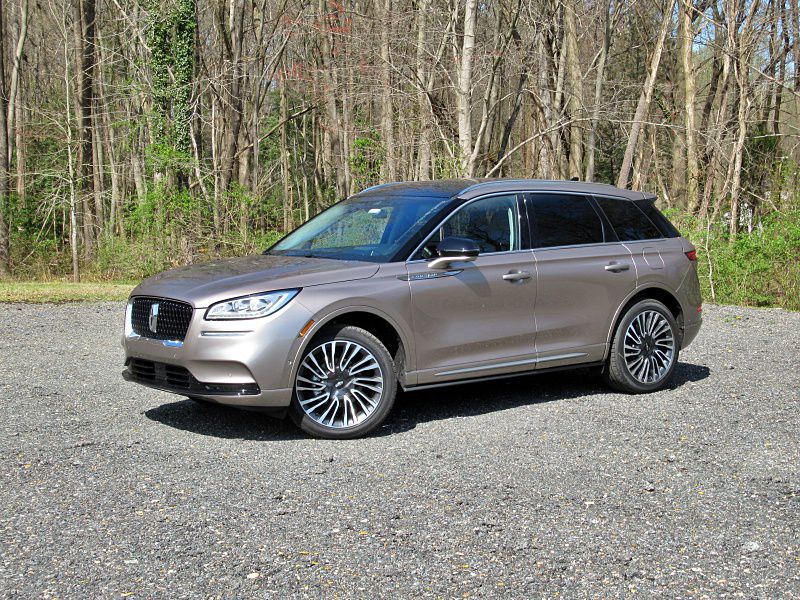
Photo by Brady Holt
Quick Yet Efficient
The Corsair is currently available with a choice of two turbocharged four-cylinder engines, both of which deliver zippy power and respectable gas mileage. A 250-horsepower 2.0-liter is standard, shared with upper-trim versions of the Ford Escape. Our test vehicle included a 2.3-liter with 295 horsepower, an engine shared with Fords as different as the Mustang sports coupe to the Ranger pickup truck. That much horsepower gives the Corsair an edge over similarly priced competitors, but both engines have similar real-world punch. A plug-in hybrid is coming this year that will make 268 horsepower from a gasoline engine plus three electric motors.
The base Corsair with the 2.0-liter engine and front-wheel drive gets an EPA-estimated 22 mpg in the city, 29 mpg on the highway, and 25 mpg overall. Choosing all-wheel drive or the AWD-only 2.3-liter engine cost only about 1 mpg. We averaged 25 mpg in our 2.3-liter test vehicle. The plug-in hybrid can travel an estimated 28 miles per electric charge and average 33 mpg afterward; those figures trounce its luxury competitors, though those models may also be quicker. All Corsair engines are happy with low-cost regular-grade gasoline, another perk for your fuel budget.
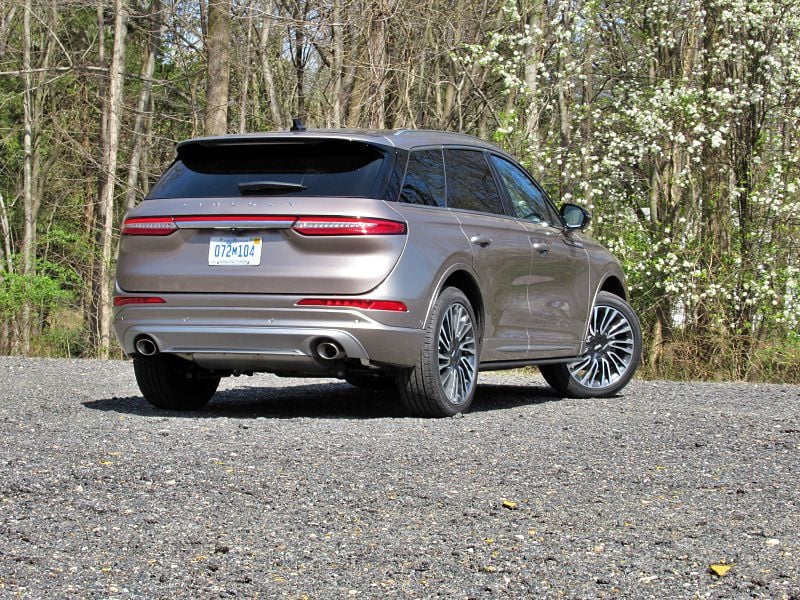
Photo by Brady Holt
Top Safety Pick
The Corsair earned a Top Safety Pick designation from the Insurance Institute for Highway Safety, reflecting top scores in its crash test and excellent performance of its automatic emergency braking system. It fell just shy of the highest mark, Top Safety Pick+, due to low-scoring headlight illumination on most models. The Corsair did score five out of five stars from the National Highway Traffic Safety Administration.
A long list of advanced safety technologies is included as standard equipment on every Corsair. These include forward automatic emergency braking, pedestrian-detection capability, blind-spot monitoring with a rear cross-traffic alert, and a lane-departure warning with lane-keeping assistance, along with an attractively executed rear-seat reminder. The optional Co-Pilot360 Plus suite adds adaptive cruise control, more sophisticated semiautonomous steering, reverse automatic braking, and a surround-view parking camera. A few competitors have even more safety features standard — but Lincoln is already more generous than most, especially considering the Corsair’s starting price.
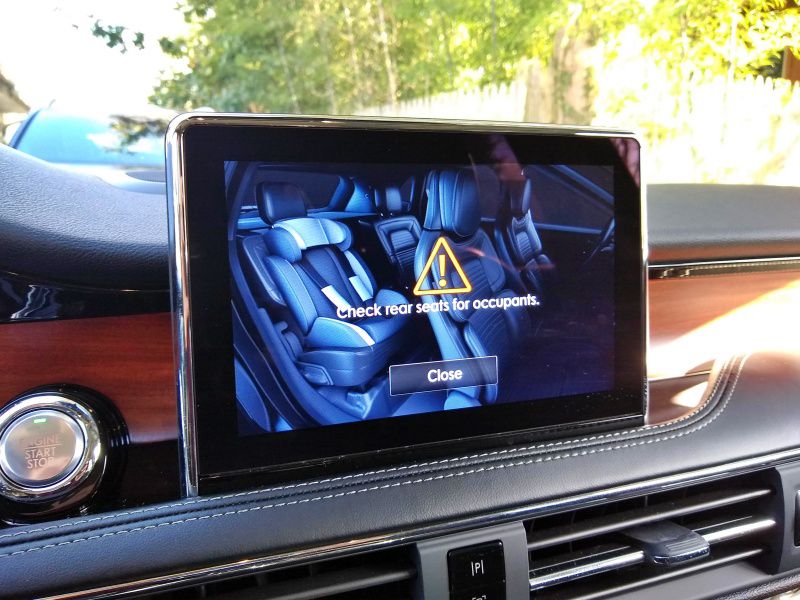
Photo by Brady Holt
Relatively Affordable — If You're Careful
The 2021 Lincoln Corsair starts at $36,105 for its base Standard trim. In addition to the aforementioned safety technology, the base Corsair is generously equipped with leatherette upholstery, heated and 10-way adjustable front seats with memory, a 10-speaker premium stereo, and a power liftgate. Options include the Co-Pilot360 suite, genuine leather, a panoramic sunroof, ventilated front seats, heated rear seats, a heated steering wheel, a navigation system, and the bigger 2.3-liter engine.
The Reserve model, like our test vehicle, starts at $42,890 and adds the leather, sunroof, and navigation, along with a 14-speaker Revel sound system. You need the Reserve if you want options that include the Perfect Position seats, the phone-as-a-key system, or even a wireless smartphone charger, and all cost extra. That’s how our test vehicle swelled to $57,680. You can drive competing luxury SUVs to even crazier levels, true, but we’d urge prospective Corsair buyers to carefully consider their must-haves — and see if a competitor might provide those same items for significantly less money. The Corsair Grand Touring plug-in hybrid will start at $50,230 with a few more features than the Reserve, and it’s eligible for a $6,843 federal tax credit.
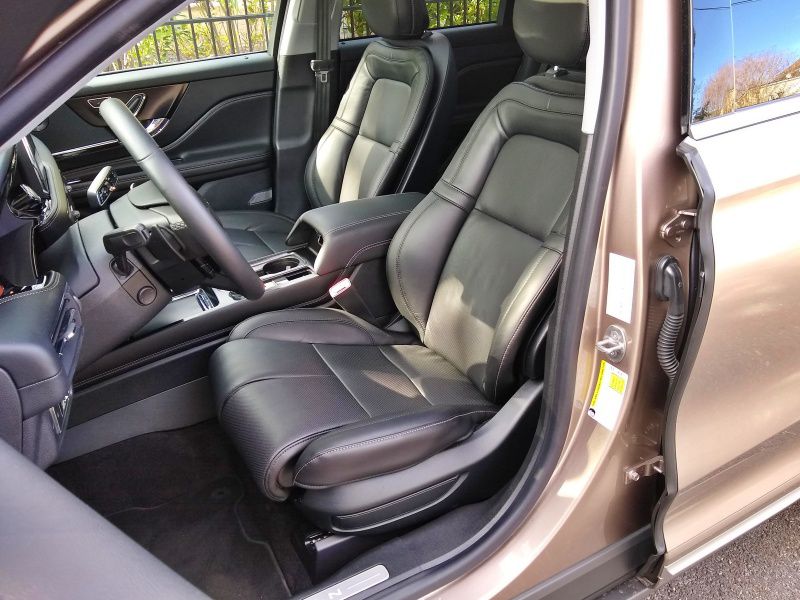
Photo by Brady Holt
Competitors to Consider
The Corsair faces a long list of potential competitors in the compact luxury crossover class. We’ll focus on several models that can challenge it on affordability as well as luxury.
Let’s start with the Acura RDX: a well-rounded SUV that’s pleasant to drive, has even more cargo room than the Corsair, and is fully loaded below $50,000. However, the Corsair has more comfortable seats and its controls are easier to use. The entry from Lincoln’s crosstown rival, the Cadillac XT4, looks sportier than the Corsair, but it’s not as quick, spacious, or opulently finished. The same demerits apply to the newly redesigned Buick Envision, which at least boasts a substantial price advantage along with more room than the XT4 (if not the Corsair). We’d also consider the Volvo XC40; although it’s technically a subcompact model, its combination of roominess and affordability puts it against the Corsair. And if you want more room and power than the Corsair provides but want a similar design, head straight for the excellent mid-size Lincoln Nautilus.
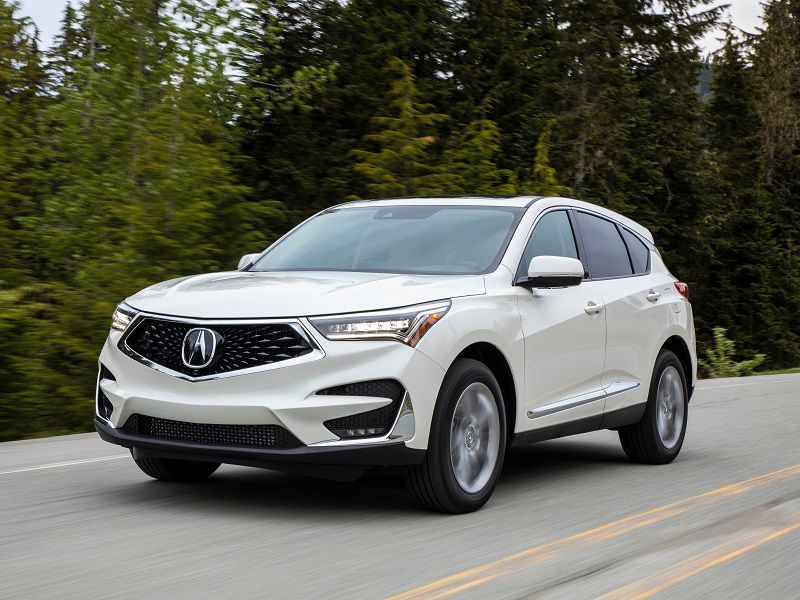
Photo by Acura
Gentility Without All the Bulk
It’s not easy for a small SUV to exude class, but that’s just what the 2021 Lincoln Corsair does. It offers the gentility of a classic Lincoln, but without all the bulk. And it backs up that aesthetic vibe with agreeable driving dynamics, a usefully spacious interior, and a highly competitive starting price.
This isn’t a brilliantly engineered “sports sedan on stilts” like a few European competitors. And it’s not the most opulently finished luxury crossover you can buy. But the Corsair gets a lot right — especially if you’re able to stick with the more affordable base model. And if you thought you needed a bigger SUV to get a smooth, quiet ride and enough interior space, give the roomy, refined Corsair a chance to impress you.
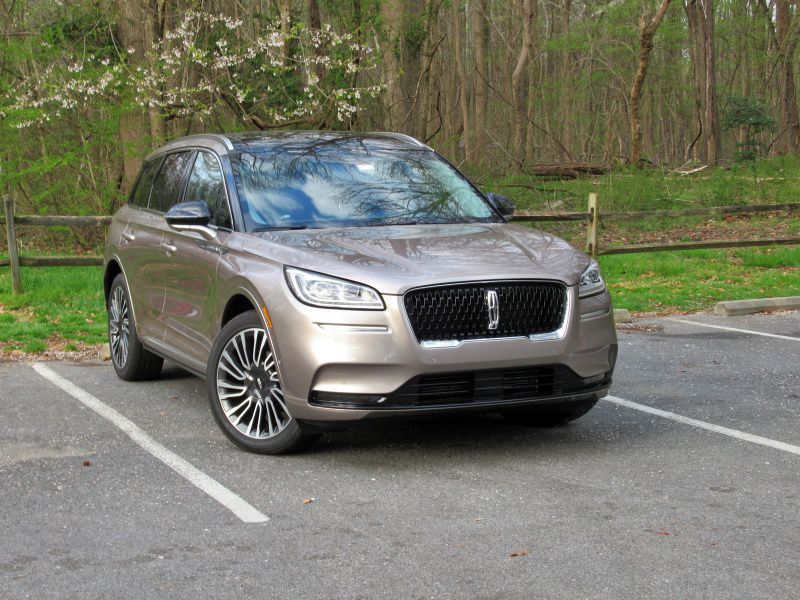
Photo by Brady Holt